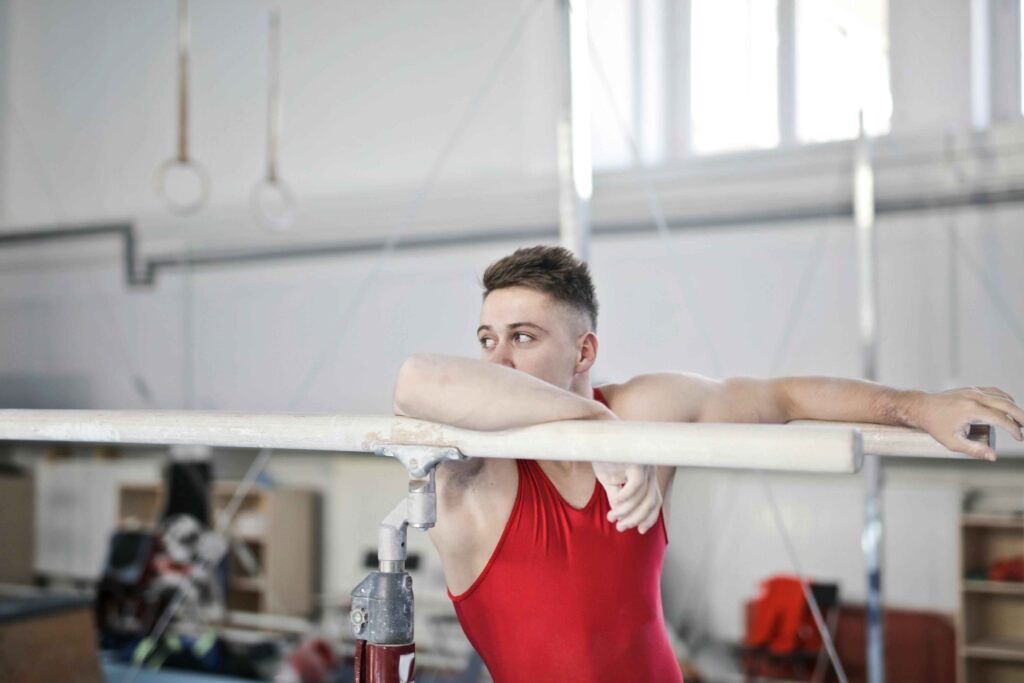Gymnastics stands as a widespread sport which demands members to demonstrate strength together with flexibility and coherent movement. Most gymnastic athletes engage in this sport because they aim to build their physical abilities as well as possibly compete internationally or nationally. Many parents and their gymnastic child athletes worry about possible growth impediments from gymnastics participation. We will investigate the gymnastics-growth relationship through existing research along with professional opinions to deliver an extensive solution to this question in this paper.
Introduction to Gymnastics and Growth:
As sporting discipline gymnastic demands powerful motions between its tumbling practices and vaulting disciplines and equipment usage. Gymnastic as a sport demands high amounts of strength together with power and flexibility that helps build general physical development. Certain individuals hold the opinion that gymnastic at an intensive level produces adverse effects on physical development throughout childhood and teenage years.
The Science of Growth and Development:

The evaluation of gymnastics effects on development requires knowledge about human growth patterns and developmental processes. Biracial, hormonal and environmental elements collectively determine growth patterns in the body. Childhood and adolescence bring extensive changes to the body as it grows its bones and muscles along with other tissues.
The growth plates which exist at bone ends serve to both expand bones and develop them structurally. Long bone growth plates consist of cartilage tissue which shows sensitivity to nutrition as well as hormones and physical movements. Bone growth and development may be affected by any kind of injury to the growth plates or by excessive physical strain on them.
The Impact of Gymnastics on Growth:
Ongoing research exists about gymnastics effects on growth but scientists have not reached consensus on their findings. Research shows that abundant gymnastics exercise might influence growth patterns particularly in children and teenagers.
Children between 8 to 12 years old who dedicated over 16 hours weekly to gymnastics activities displayed reduced growth rates according to the Journal of Pediatric Orthopedics (2018). Elite gymnasts aged 13 to 18 possessed reduced bone mineral density together with smaller bone dimensions when compared to participants who did not perform gymnastic according to the 2020 study in Journal of Science and Medicine in Sport.

Various research investigations have established that gymnastic activity typically shows no effects on child growth. The Journal of Sports Sciences published research in 2015 which discovered that gymnastics training exercises had no effect on the growth rates of young gymnasts between ages 10 and 14. The evidence from a 2019 review of 22 studies about gymnastic’ effects on growth remained inconsistent so researchers wanted more research to determine the relationship between gymnastics and growth.
The Effect of Gymnastics on Growth Depends on Various Factors:
The possible gymnastic-related changes to growth can be affected by multiple variables.
Trained athletes face increased risks from high-speed training sessions that extend over long time periods since this combination can lead to growth plate damage which affects growing bones.
The developing bones of gymnasts between 8 to 12 years old make them more prone to growth plate damage during this age and developmental stage.
Nutrition together with general health status stands essential for proper physical development. The health condition combined with inadequate nutrition exposes gymnasts to greater risks of developing growth difficulties.
Expert Opinions and Recommendations:
Sports medicine professionals together with pediatric orthopedic specialists recommend the following advice to young gymnasts:
- Coaches and parents need to track both the intensity levels and training periods in order to stop young gymnasts from training too hard.
- The gymnastic athletes must give their nutrition and general health top priority because such care supports their development. You can contact us here.
- Athletes together with coaches must apply appropriate training techniques and safety standards as prevention measures against injuries and growth plates damage.

Conclusion:
The effects of gymnastics training on growth remain intricate because research into this field does not have complete understanding. Growth remains a topic of uncertainty regarding intense gymnastics training because studies exhibit both positive and negative findings about its effects on youngsters during their growth stages. Growth dynamics in gymnastic athletes depend heavily on four key variables: training intensity along with training length, developmental maturity levels and age, dietary requirements and physical wellness and the approaches and protective measures used in training programs.
The prevention of growth-related issues occurs through vigilant attention to training practices and safety measures along with proper eating habits and total health for both young gymnasts and their coaches and parents. Having visitations with healthcare providers provides the advantage of detecting early signs of growth challenges through periodic tests and assessments. Appropriate care measures prevent young gymnasts from experiencing growth problems as they continue active participation in their sport.


